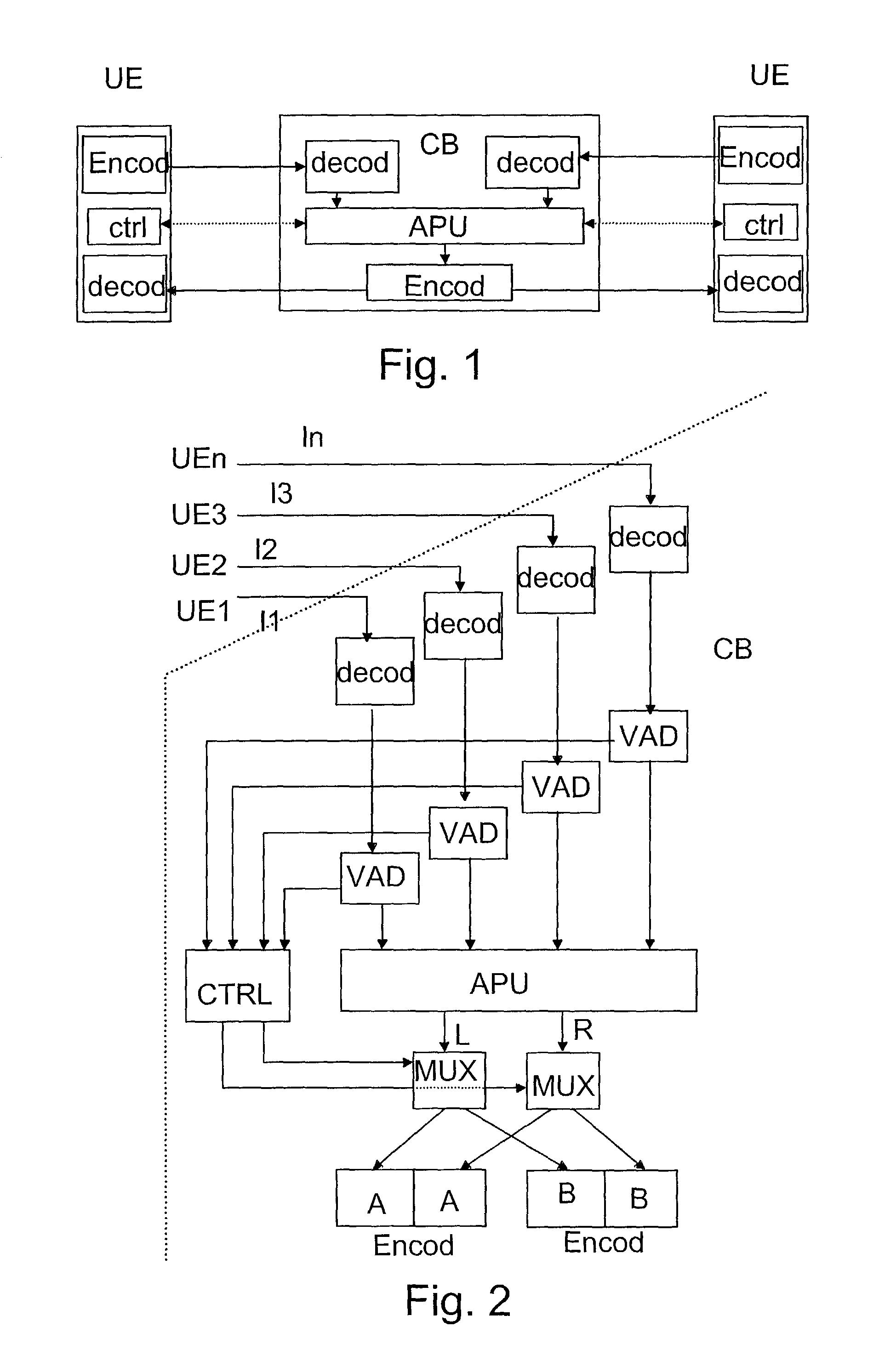Teleconferencing arrangement
a technology of teleconferencing and arrangement, applied in the field of teleconferencing systems, can solve the problems of inflexibility of the system, inability to perform good speech coding in various speech situations, and inability to optimize the bandwidth used in data transmission, and achieve the effect of good voice quality, low bandwidth, and limited bandwidth
- Summary
- Abstract
- Description
- Claims
- Application Information
AI Technical Summary
Benefits of technology
Problems solved by technology
Method used
Image
Examples
first embodiment
[0029]According to the invention, this determination can be implemented by an arrangement shown in FIG. 2, where each conference bridge input comprises, preferably after the receiving codec (Decod), a VAD unit (VAD1, . . . ,VADn, Voice Activity Detection), which is arranged to detect speech in a received audio signal. In practice an audio signal arriving in the VAD unit is arranged in frames, each of which comprises N samples. The VAD unit checks each frame and, as a result of the check, sends a control signal indicating whether or not active speech was found in the frame checked to the control unit CTRL. Thus a control signal from each VAD unit is supplied to the control unit CTRL, i.e. n control signals altogether, from which the control unit CTRL can determine at least whether the frames of the incoming audio signals comprise simultaneously one or more active speech signals. This can be implemented e.g. as follows: the control signals arriving from the VAD unit are signals enabli...
second embodiment
[0038]According to the invention, the switching of the transmitting codec or the mode of the transmitting codec described above can also be implemented by the arrangement illustrated in FIG. 3. Also in this case the input of each conference bridge comprises, preferably after the receiving codec (Decod), a VAD unit (VAD1, . . . ,VADn, Voice Activity Detection), which is arranged to detect speech in the audio frames of the received audio signal. The VAD unit checks each frame and as a result of the check transmits a control signal indicating whether or not active speech was found in the frame checked to the control unit CTRL. From the control signals received from each VAD unit the control unit CTRL determines e.g. in the manner described above whether the frames of the incoming audio signals simultaneously comprise one or more active speech signals. The audio frames of the audio signals of different inputs are fed into an audio processing unit APU, which forms a combined audio signal...
PUM
 Login to View More
Login to View More Abstract
Description
Claims
Application Information
 Login to View More
Login to View More - R&D
- Intellectual Property
- Life Sciences
- Materials
- Tech Scout
- Unparalleled Data Quality
- Higher Quality Content
- 60% Fewer Hallucinations
Browse by: Latest US Patents, China's latest patents, Technical Efficacy Thesaurus, Application Domain, Technology Topic, Popular Technical Reports.
© 2025 PatSnap. All rights reserved.Legal|Privacy policy|Modern Slavery Act Transparency Statement|Sitemap|About US| Contact US: help@patsnap.com



